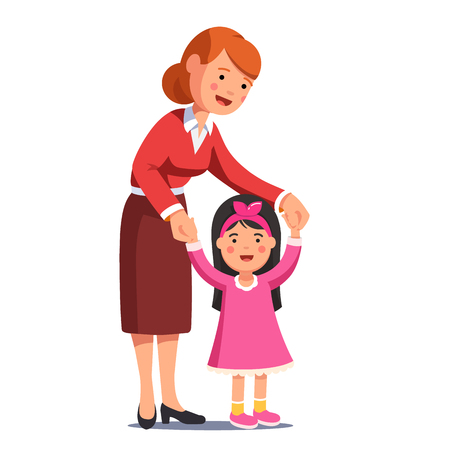Securing Cabinets and Drawers
Babies are naturally curious, and the kitchen is full of fascinating places to explore. However, cabinets and drawers often contain sharp objects, cleaning supplies, and other hazardous items that can be dangerous for little hands. To keep your child safe, its essential to secure these areas properly.
Install Childproof Locks
One of the best ways to prevent access to unsafe items is by installing childproof locks on all cabinets and drawers. There are several types of locks available, each with its own benefits:
| Type of Lock | Description |
|---|---|
| Magnetic Locks | Use a magnetic key to unlock; invisible from the outside and highly effective. |
| Latch Locks | A simple latch mechanism that prevents cabinets from opening fully. |
| Adhesive Strap Locks | Flexible straps that stick onto cabinet doors; easy to install without tools. |
| Spring-Loaded Latches | A spring mechanism keeps doors closed until pressed in a specific way. |
Prioritize High-Risk Areas
Certain cabinets and drawers pose a higher risk than others. Focus on securing these first:
- The Under-Sink Cabinet: Often stores cleaning supplies and chemicals.
- The Silverware Drawer: Contains sharp knives and utensils.
- Pots and Pans Storage: Heavy objects can be dangerous if pulled down.
Tidy Up for Extra Safety
A clutter-free kitchen is a safer kitchen. Even with childproof locks in place, try to store hazardous items on higher shelves or in locked pantries. Keeping your kitchen organized reduces the chances of accidents.
2. Managing Small Appliances and Electrical Safety
Small kitchen appliances and electrical outlets can pose serious risks to curious little hands. To keep your baby safe, its important to store appliances properly, secure loose cords, and cover outlets.
Store Small Appliances Out of Reach
Blenders, toasters, coffee makers, and other small appliances should be kept on high shelves or inside cabinets with childproof locks. Babies love grabbing objects, and pulling an appliance down could lead to burns, cuts, or even electrical shocks.
Secure Electrical Cords
Dangling cords are tempting for babies to tug on. Keep cords short and tucked away using cord organizers or zip ties. If possible, unplug appliances when they’re not in use and store the cords out of sight.
Tips for Managing Cords
| Issue | Solution |
|---|---|
| Long, dangling cords | Use cord organizers or wrap them up neatly |
| Cords hanging over counter edges | Push appliances further back on the counter |
| Exposed power strips | Use a childproof power strip cover |
Use Outlet Covers
Electrical outlets are at the perfect height for little hands to explore. Use outlet covers or safety plugs to prevent your baby from sticking fingers or objects into them. For outlets that are frequently used, consider sliding outlet covers that automatically close when not in use.
Additional Safety Measures
- Avoid using extension cords where your baby can reach them.
- If possible, install tamper-resistant outlets for extra protection.
- Check regularly for damaged cords and replace them immediately.
By taking these simple steps, you can greatly reduce the risk of electrical hazards in your kitchen while keeping it functional and safe for your family.
![]()
Preventing Burns and Scalds
The kitchen is full of hot surfaces, boiling liquids, and heated appliances that can be dangerous for little explorers. Taking the right precautions can help prevent painful burns and scalds.
Keep Hot Items Away from Edges
Babies and toddlers love to reach up and grab whatever they can. To avoid accidents, always place hot pots, pans, and beverages toward the back of the counter or stove. This simple step can prevent spills that could cause serious burns.
Use Stove Knob Covers
Curious hands may try to turn stove knobs, which can lead to accidental fires or burns. Installing stove knob covers makes it harder for little ones to turn on burners, reducing the risk of dangerous situations.
Create a Safe Zone
Setting clear boundaries in the kitchen helps keep your child away from cooking hazards. Consider using baby gates or setting up a designated play area away from the stove and oven. If your child is old enough to understand, teach them that certain areas are off-limits when cooking is in progress.
Quick Safety Tips for Preventing Burns
| Safety Measure | Why It Helps |
|---|---|
| Turn pot handles inward | Prevents children from grabbing or knocking over hot cookware |
| Avoid carrying hot liquids near your child | Reduces the risk of accidental spills and burns |
| Use an oven lock | Keeps children from opening a hot oven door |
| Test food temperature before serving | Avoids burning your child’s mouth with overly hot food |
Taking these precautions will help create a safer kitchen environment for your little one while giving you peace of mind.
4. Choosing Safe Storage Solutions
Proper storage is key to keeping your kitchen safe for your little one. Babies are naturally curious, and they love to explore cabinets and drawers. Making smart storage choices can prevent accidents and keep dangerous items out of reach.
Store Heavy and Breakable Items on Lower Shelves
It may seem logical to store heavy pots, pans, or glass containers up high, but this can be risky if they fall. Instead, place these items on lower shelves or in bottom cabinets. This way, even if your baby opens a cabinet door, theres less risk of serious injury.
Keep Harmful Substances in High, Locked Cabinets
Chemicals like cleaning supplies, dishwashing detergent, and even certain spices or food items can be harmful if ingested. Always store these products in high cabinets with childproof locks to prevent access. If you dont have high storage available, invest in sturdy cabinet locks for lower cabinets.
Safe vs. Unsafe Storage Locations
| Item Type | Best Storage Location | Additional Safety Tips |
|---|---|---|
| Heavy pots & pans | Lower shelves or bottom cabinets | Avoid stacking too high to prevent tipping over |
| Glassware & breakables | Lower shelves (away from edges) | Cushion with shelf liners to reduce slipping |
| Chemicals & cleaning supplies | High, locked cabinets | Add safety latches for extra protection |
| Sharp objects (knives, scissors) | A locked drawer or high shelf | Avoid placing within reach of curious hands |
| Dishes & utensils for baby use | Easily accessible lower drawers/shelves | Makes it easy for toddlers to help themselves safely |
Tidy Up Regularly to Maintain Safety
A cluttered kitchen can create unexpected hazards. Make it a habit to put things back in their proper places after each use. Keep countertops clear of sharp tools and small objects that could become choking hazards. Regularly check that cabinet locks and safety latches are secure.
The Importance of Consistency
Your baby learns through repetition, so if they find something once, theyll keep looking for it again. Keeping hazardous items consistently stored in safe locations helps reinforce boundaries and keeps your little explorer protected.
5. Managing Trash and Choking Hazards
Keeping your kitchen safe for your baby means paying close attention to trash and potential choking hazards. Babies are naturally curious and love to explore, which makes an unsecured trash can or small objects within reach a serious risk. Here’s how you can manage these dangers effectively.
Use a Childproof Trash Can
A regular trash can may be an easy target for your little one, who might try to dig inside or even tip it over. To prevent this:
- Choose a trash can with a locking lid to keep curious hands out.
- Opt for a heavy-duty model that won’t easily tip over.
- Place the trash can inside a cabinet secured with childproof locks.
Keep Small Objects Out of Reach
Small items are one of the biggest choking hazards in the kitchen. Always ensure that things like bottle caps, utensils, and food scraps are kept far from your baby’s reach.
Common Choking Hazards in the Kitchen
| Item | Risk Level | How to Keep It Safe |
|---|---|---|
| Bottle caps | High | Store them in closed containers or dispose of them immediately. |
| Nuts and small snacks | High | Avoid leaving them on countertops or tables. |
| Coffee pods | Medium | Keep them in a locked drawer or high shelf. |
| Pills or vitamins | Very High | Store in childproof containers and keep them out of sight. |
Avoid Plastic Bag Dangers
Plastic bags pose both suffocation and choking risks for babies. To keep them safe:
- Store plastic bags in a high cabinet with a secure latch.
- Avoid leaving grocery bags on the floor or low surfaces.
- If possible, switch to reusable fabric bags and store them properly.


